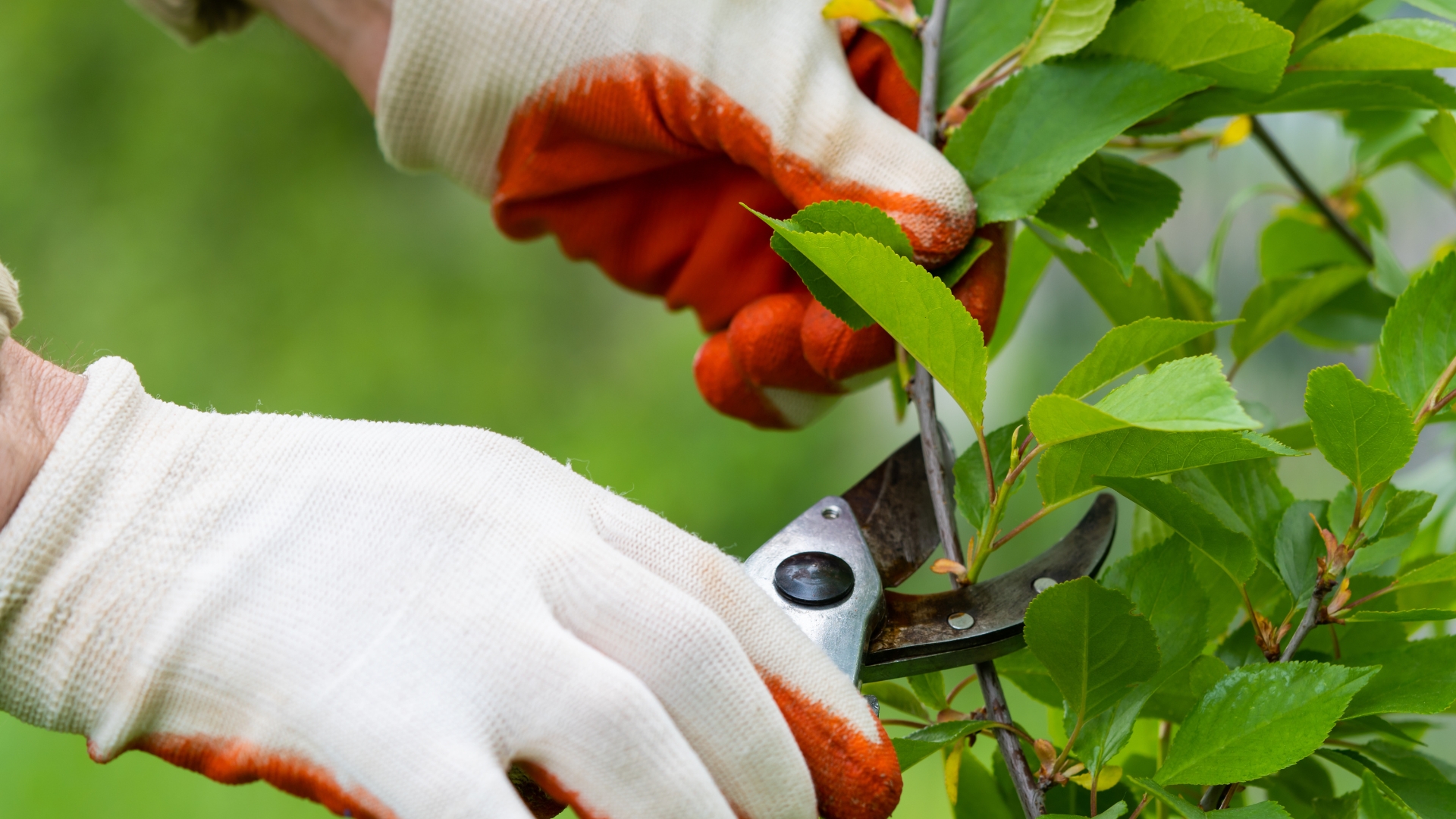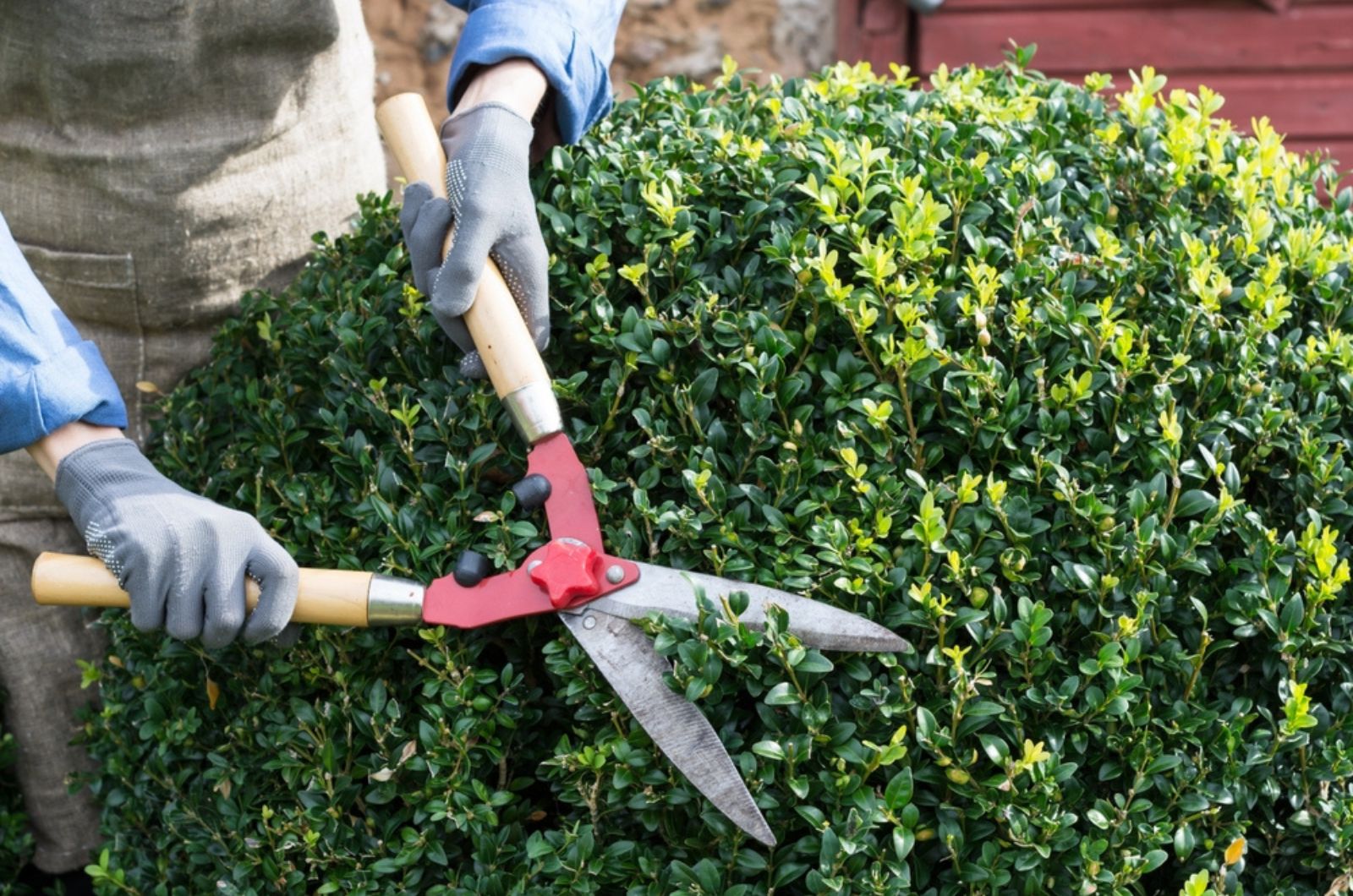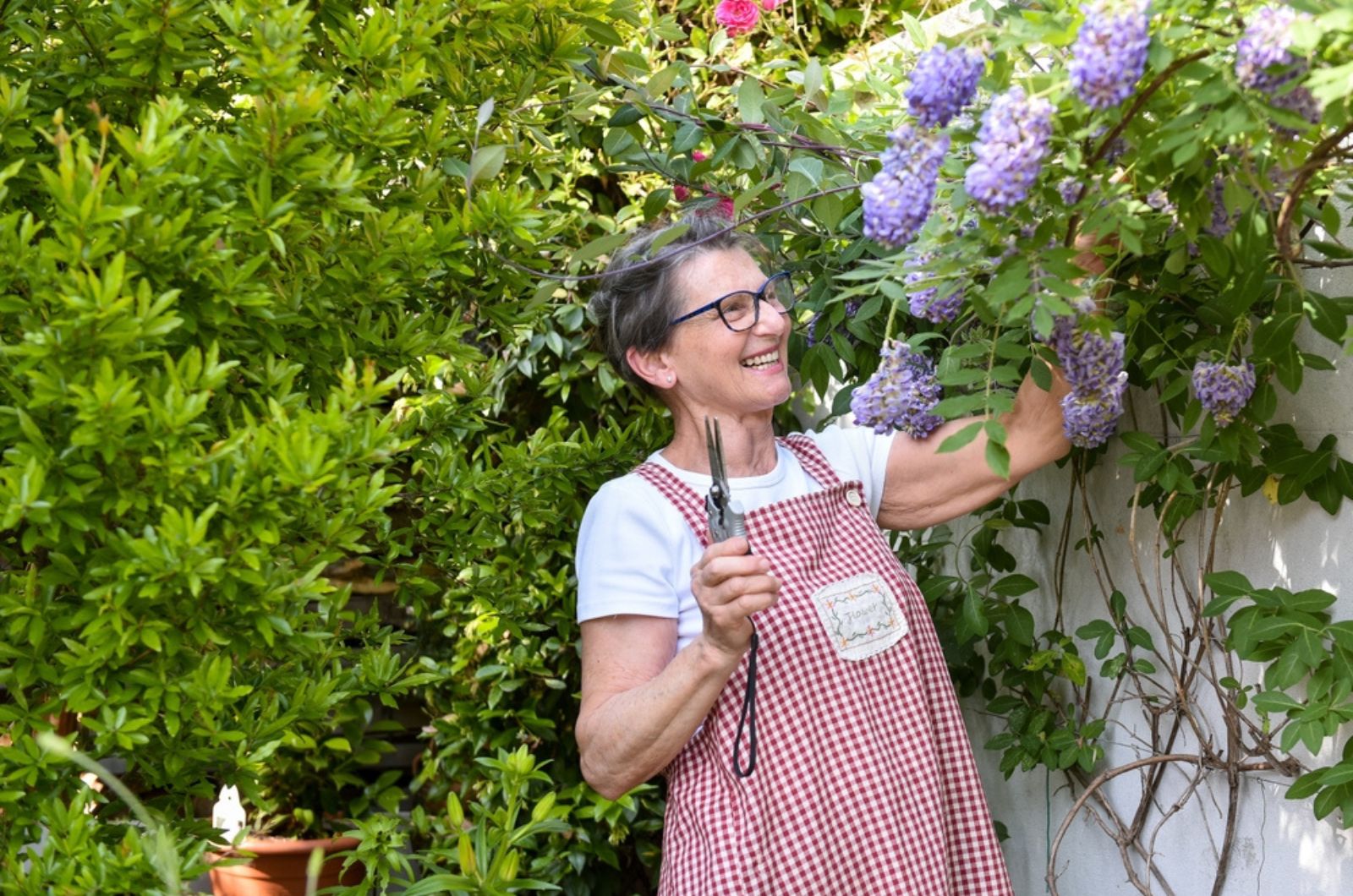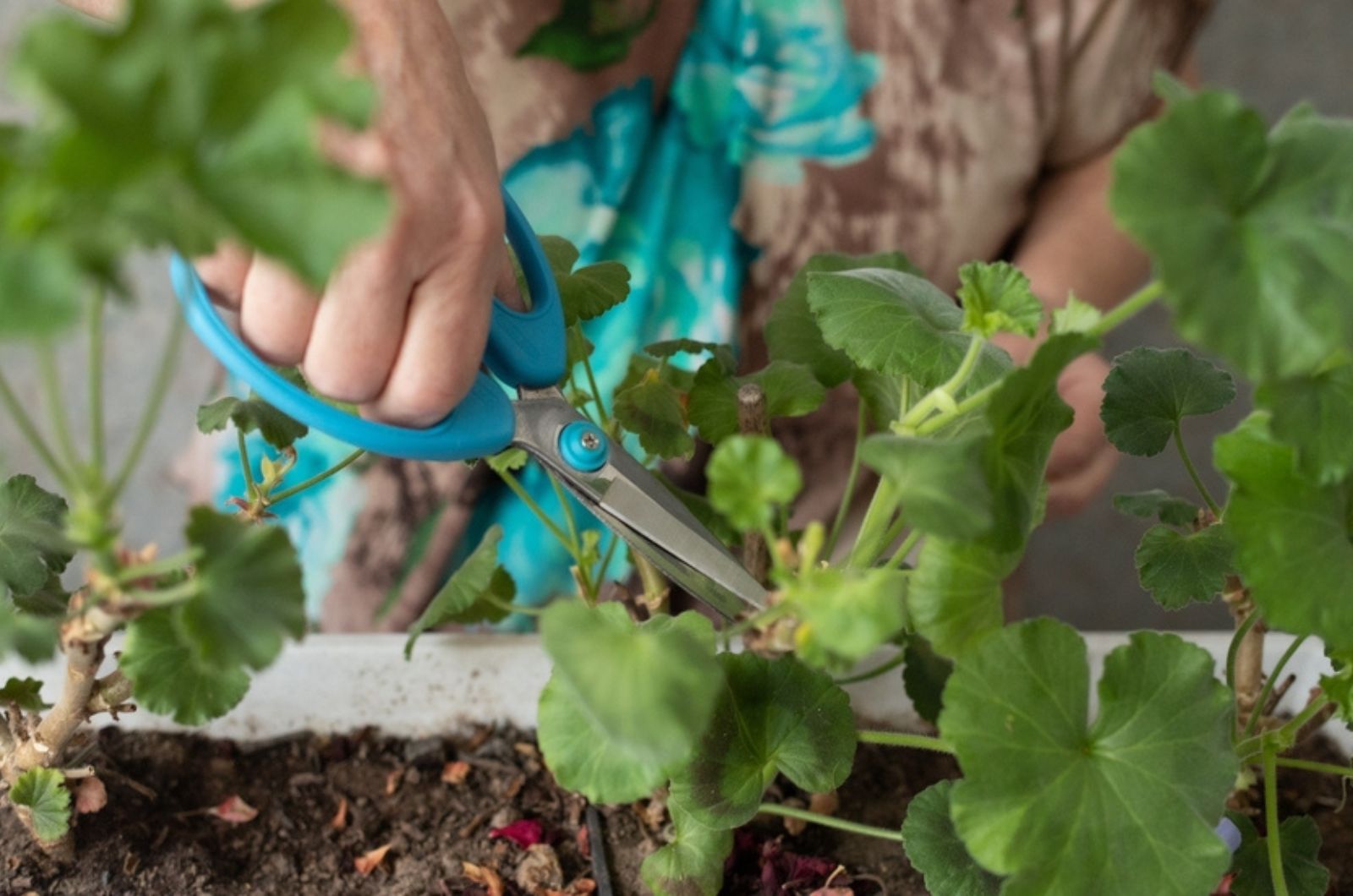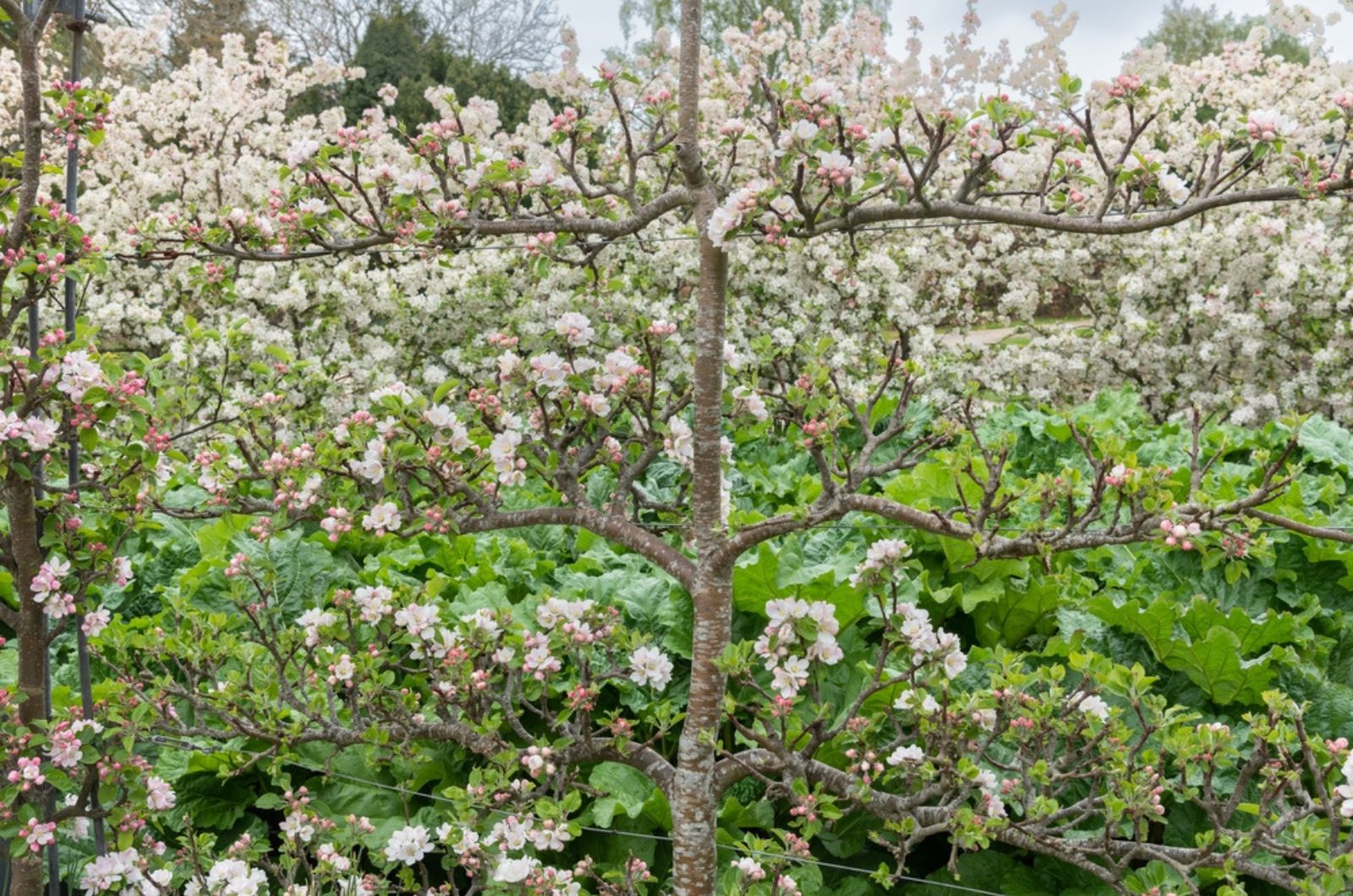July is here and you’ve probably already filled your garden with your favorite plants! Some may think the only thing to do now is enjoy the hues, scents, and textures of the garden, and look forward to harvesting the most delicious veggies and fruits.
Well, I also thought spring was the busiest season for gardeners but summer isn’t far away. You’ll also have a long to-do list for summer, especially in July.
And at the top of your list should be a task that will keep your plants in shape and improve their overall health. Of course, I’m talking about pruning!
Not every plant will enjoy a haircut in July, but let’s see the 5 that most definitely will!
1. Maintain The Sleek Shape Of Your Box
No matter which name we use – box, boxwood, or buxus – we can all agree on one thing: this is one of the prettiest topiary plants!
This versatile evergreen shrub can elevate your borders and is perfect for planting en masse.
Did you know that buxus is on the list of plants you shouldn’t prune in the fall? Some gardeners prune their boxwood in late spring and late summer.
I’m more into the slogan work smarter not harder so I prune it only once a year. And July works perfectly!
If you only have a few boxwoods, prune them in late July. On the other hand, if your large property is fully bordered with buxuses, you should start pruning in mid-July.
2. Wisteria Needs A Haircut, Too
The stunning blossoms of wisteria make the plant one of the most desired in the gardening world. But maintaining the shape and size of your wisteria is crucial or you’ll end up with a messy look and fewer blooms.
This is a fast-growing climber and I agree with other gardeners who say that it needs pruning twice a year.
The first time you need to prune is in late winter or early spring. This allows you to prevent your wisteria from getting wild and is a good head start for the growing season.
Pruning your wisteria in July will help the plant focus its energy on producing new growth and it can sometimes give you another set of blooms.
When trimming, make sure to cut long and leggy shoots back to about five buds.
3. Prune Your Tomatoes To Boost The Yield
Tomatoes are probably the most commonly grown veggies, and for good reason. They’re juicy, super tasty, and aren’t too fussy when it comes to growing conditions.
But for the best results, you must prune your tomatoes. You’ll be rewarded with large fruits that mature faster.
I always prune my tomatoes in early July because the first flowers open at this time. I have to mention that I grow indeterminate tomatoes aka vining tomatoes, and they do require pruning all summer long.
Your main goal is to snip the suckers you find between the main stem and leaf branches. Even though you can use your fingers for this task, I always opt for pruning scissors to avoid damaging the plant.
Why remove these suckers? Remember, they use the tomato plant’s energy but won’t generate any fruits, so it’s pointless to leave them. Additionally, they’ll affect the ripening rate of the developed fruits and no one needs that!
Once the end of July arrives, you should also remove the lower leaves of the plant. This decreases the tomato’s susceptibility to blight and light can reach the fruits more easily.
4. Trimming Will Get The Most Out Of Your Hardy Geraniums
If you’re a fan of long-blooming perennials, chances are you already have a few hardy geraniums planted in your garden!
I mean, who could resist the stunning white, pink, purple, or blue blossoms? Well, you can get another set of blooms by pruning your geraniums!
First, you need to wait until the first set of blossoms fade. Then, grab your pruners and cut the plants back to just above the ground level.
This prevents your hardy geraniums from flopping and affecting any other plants in your flower beds.
And the best part is it encourages the plant to produce new buds that will open in late summer!
5. Don’t Forget To Snip Espalier Trees
Espalier tree is just a fancy term for ornamentally trained trees. They indeed look amazing, plus they produce delicious fruits.
So, if you have espalier apples or pears, you need to add pruning to your to-do list, TWICE!
Reserve the first pruning for winter and the second one for July. If you’re unsure if it’s the right time to prune, take a look at the lower shoots.
As soon as the lower third of the espalier tree shoots turn woody, it’s your green light for pruning.
Snip the vertical shoots to approximately 2 inches from the base.
Be careful not to damage any fruits when pruning (I’ve been down this road before, and I know it can be a real heartbreaker).
July pruning is your golden ticket to a lush and flourishing garden! Stick to pruning these 5 beauties and you’ll reap the rewards in no time!

